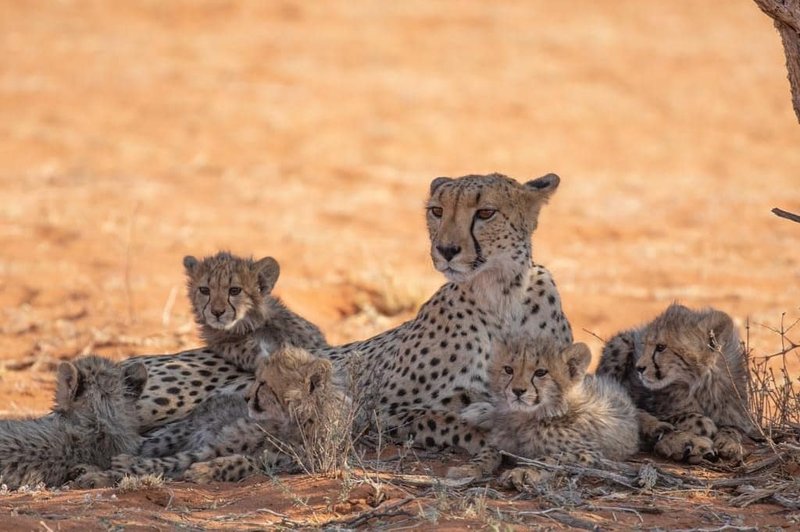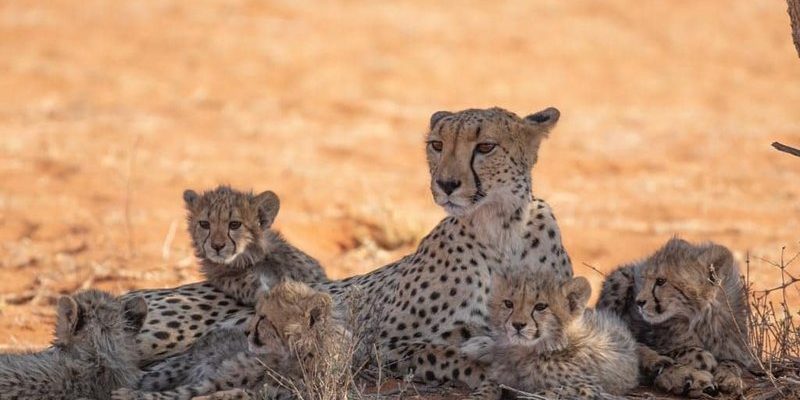
Cheetah cubs are born into a world filled with dangers—predators, scarce resources, and the challenges of learning to hunt. It’s a tough gig, and the strategies their mothers use to raise them are fascinating. Let’s dive into how these incredible big cats care for their young and prepare them for life on the wild frontier.
The Early Days: Cheetah Cubs’ First Weeks
When cheetah cubs are born, they are completely helpless, much like a newborn human baby. Weighing only about 1.5 pounds, these tiny furballs are blind and rely solely on their mother’s care. The first few weeks are crucial for survival, as the cubs are vulnerable to numerous predators—like lions and hyenas—that see them as easy prey.
During this time, cheetah mothers seek out hidden spots to give birth. They often choose dense grasslands or rocky outcrops to shield their cubs from prying eyes. This stage is all about safety and bonding. The mother stays close, nursing and keeping her little ones warm. They can remain hidden for up to six weeks, allowing the cubs to gain strength and develop their unique spots, which will help them camouflage later on.
By around two weeks, the cubs start opening their eyes and can begin to crawl. The mother’s attention remains crucial at this stage, as she needs to teach them about their environment. She’ll frequently move them to new locations to keep them safe from potential threats. It’s a mix of motherly love and cunning survival tactics that set the stage for their future.
Learning to Hunt: The Critical Skill
As the cubs grow, around three months old, they start to play and engage in rough-and-tumble games. This play isn’t just for fun—it’s a critical part of their development. Through these playful interactions, they learn the skills they’ll need for hunting. Here’s where the mother’s influence is vital.
She starts to introduce them to the art of the hunt by bringing back small prey, like rabbits or birds. You might picture a mother holding her child’s hand as they learn to ride a bike for the first time; it’s similar. The cheetah mother demonstrates how to stalk and pounce, teaching her little ones the nuances of their natural instincts.
By the time they’re about six months old, the cubs are strong enough to accompany their mother on hunts. It’s an exhilarating experience that’s both educational and thrilling. They get to observe her methods, picking up tricks of the trade while learning to work as a team. Cheetah mothers are dedicated teachers, and it’s amazing to see how she balances her role as a caregiver with the harsh realities of the wild.
Challenges and Threats: The Reality of Wild Life
Raising cheetah cubs isn’t a walk in the park—it’s filled with challenges. The greatest threat comes from other predators, like lions or hyenas, who see cheetah cubs as an easy meal. Cheetah mothers are aware of this danger and are constantly on alert.
To protect her young, she often keeps them hidden in a secluded spot while she hunts. This strategy allows her to provide for her family without drawing attention to her vulnerable cubs. You could say she’s like a superhero, always on guard and ready to swoop in if trouble looms.
Additionally, food scarcity can pose another significant problem. Cheetahs need a lot of food to sustain their growing cubs, and when prey is scarce, it puts added pressure on the mother. There are times she may go without food for days, just to ensure her cubs can eat. This determination showcases not only her maternal instincts but also the sacrifices she makes for their survival.
Independence: Teaching the Cubs to Fly
As the cubs approach the age of around 10 to 12 months, it’s time for them to start gaining independence. They’ve learned a lot from their mother, but now it’s time to see if they can stand on their own. Cheetah mothers will start to leave them alone for longer periods, encouraging them to hunt and explore independently.
This gradual separation is crucial for their development. It might seem tough, like sending your kid off to school for the first time, but it’s a necessary step for their growth. The mother keeps a watchful eye from a distance, ensuring they can still feel her support while they learn to navigate their world.
During this time, the cubs will also start to socialize with other young cheetahs, which is important for their emotional and social growth. It helps them develop bonds that can be vital later in life, especially when they become adults and form their own territories.
Emotional Bonds: Mother and Cubs
The relationship between a cheetah mother and her cubs is incredibly strong. They share a bond that’s built on trust and affection. During their time together, the mother often licks and nuzzles her cubs, strengthening their emotional connection. These moments are crucial; they help the cubs feel secure and loved in an unpredictable world.
Cheetah mothers also display protective behaviors that further illustrate their commitment. If a cub seems distressed or in danger, she’ll quickly intervene, showcasing her fierce protectiveness. The bond is more than just survival; it’s about nurturing emotional ties that help her cubs thrive.
As the cubs mature, they will eventually leave to establish their own territories or join a coalition with other young males. While this separation can be bittersweet, it’s a part of nature’s cycle. The memories and teachings from their mother will stay with them, guiding them as they navigate their adult lives.
Cheetah mothers play a vital role in not just raising their young but also in ensuring the survival of the species. They face numerous challenges, from threats to their cubs to the unpredictability of the environment. Yet, they manage to balance nurturing with teaching essential life skills, getting their little ones ready for the wild world ahead.
Understanding how cheetahs raise their young gives us insight into the complex behaviors of wildlife and the importance of maternal bonds. It’s a reminder of how necessary it is for these magnificent creatures to adapt, survive, and thrive in their habitats. In the end, it’s not just about speed on the savannah; it’s about the heart and dedication that defines their lives as well.

